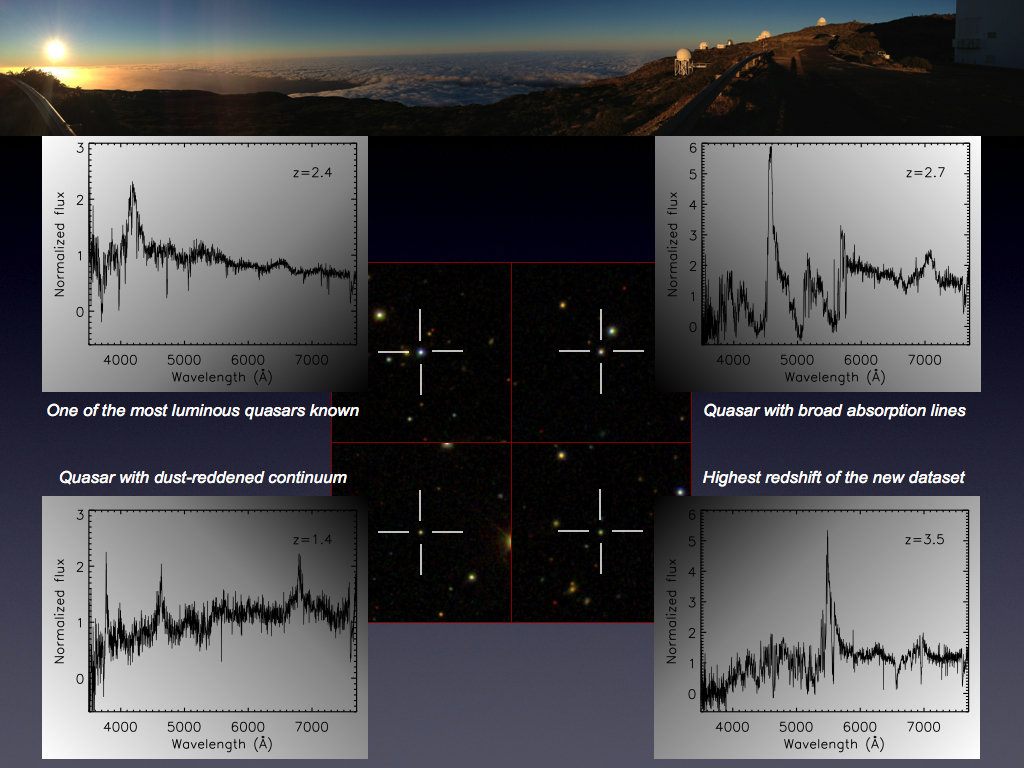Daily Image
16-06-2015New Quasars in the Near-Infrared
| Submitter: | Natasha Maddox |
| Description: | Determining which points of light in the sky are stars in the Milky Way and which are quasars at cosmological distances is a difficult task, as they appear to be identical in images. The easiest way to know for certain is with spectroscopy. Choosing which points to obtain spectra of, to maximize both completeness and efficiency, is the challenge. The first quasar selection was based at radio wavelengths, but we now know that only ~10% of quasars are radio loud. Quasars can also be bright at X-rays, but if the central engine is surrounded by gas and dust, the X-rays are absorbed. The SDSS has used optical light to construct a catalogue of more than 200,000 quasars at redshift up to 5, but it is still missing quasars located in dusty galaxies, and quasars with unusual spectral properties. The near-infrared (NIR) is able to see through dust in galaxies to find quasars that would otherwise be missed by optical selection. It is also able to find quasars with strange properties, that may not look like quasars at first. Combining optical and NIR imaging, we have designed an algorithm to search through large amounts of imaging data to find quasar candidates that were missed by other search algorithms. Spectroscopy of the candidates was recently performed at the 4.2m William Herschel Telescope on La Palma, and 140 previously unknown quasars were discovered. Images of four of the new quasars and their spectra are shown in the image. Among the newly found quasars is one of the most luminous known, along with quasars with unusual spectra. |
| Copyright: | Natasha Maddox (ASTRON) |
| Tweet |  |
